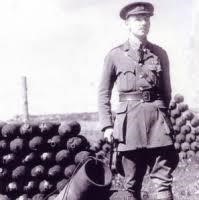A Step-By-Step Procedure For Backing Up and Restoring Clusters

Many cluster administrators are curious about the process. In this article, you’ll learn about the Backup-archive client scheduler and how to take a backup and restore it. You’ll also learn how to create a replication schedule. Then you can follow the steps on how to back up and restore a kubernetes cluster.
The backup-archive client scheduler process
In the case of backup, the cluster must be mounted to /mnt/backup. Restoring the cluster requires the same node from which it was generated. After creating a backup, you need to select the desired backup file and click on “Backup Entire Cluster.” After clicking “Restore,” a confirmation message will appear.
If you want to restore a cluster, you can perform the following operations:
Creating a replication schedule
To create a replication schedule for backing up and restoring clusters, open the Admin Console and go to the Backup tab. Select the desired backup cluster. Next, specify a destination directory. Specify the destination directory and the date for the next run. Once the process is complete, click Save. Creating a replication schedule for backing up and restoring clusters requires BDR knowledge. In addition to the prerequisites, the process must be tested before being deployed in production.
To create a replication schedule for backing up and restoring clusters, you must set up a peer cluster. The peer cluster needs to gain access to the source cluster to run the export command to list the HDFS files and read the data for the destination cluster. Creating a replication schedule for backing up and restoring clusters is relatively simple and only takes a few minutes. You will need to define your peer cluster in the Admin Console.
Taking a backup
Taking a backup and restoring cluster data is a common process. Once you’ve created a cluster, you can use the cluster API to take a backup of it. To restore a cluster, you must execute the restore command on each cluster member. This process is almost the same as creating a cluster. You can see the status of a backup by clicking the date and time the backup was created.
A series or full backup is a full backup of all the data in the bucket. This type of backup reflects all data at the time of the backup. If you choose a series backup, all the data on the bucket is present at the time of the last incremental backup. All cluster backups are stored according to the Backup Retention setting in Autosave Schedule. This includes both manual backups and automatic backups.
Restoring a backup
If you are restoring a backup for a cluster, you will need first to uninstall the source cluster and install the backup storage. Then, mount the backup storage to /mnt/backup, the “path to backup” directory. To identify the backup directory, you can look up the cluster inventory. Backup directory names are in the format node_id. If the backup has not been successfully created, you will see gaps in deep monitoring data.
The restore cluster node must be the same node that created the backup. Next, locate the backup file you want to restore. Select the file and click Backup Entire Cluster. Once the cluster restores, a confirmation message will appear. The system restore may take a few minutes. Once the process is complete, you will have restored your cluster. You can now start using your cluster. You can restore clusters with a simple command.
Taking a restore
Backing up and restoring clusters should be done by executing the correct API call for each node. You should use a valid API token to perform the restore. The node must be removed from the cluster, and the new one should have similar hardware and disk layout. The restored cluster is then available on the Clusters page. If the previous cluster is already in use, you should first uninstall it before performing the restore.
After restoring the cluster, you need to copy the etcd backup directory to the recovery control-plane host. Next, you will need to stop all static pods on other nodes. This step is critical for the recovery of a cluster after an upgrade. After this step, the etcd cluster is ready to be restored. To begin the process, change the name of the etcd container to etcd-old. Also, you should change the etcd container only to have one node. Finally, add the –force-new-cluster option to the command.










